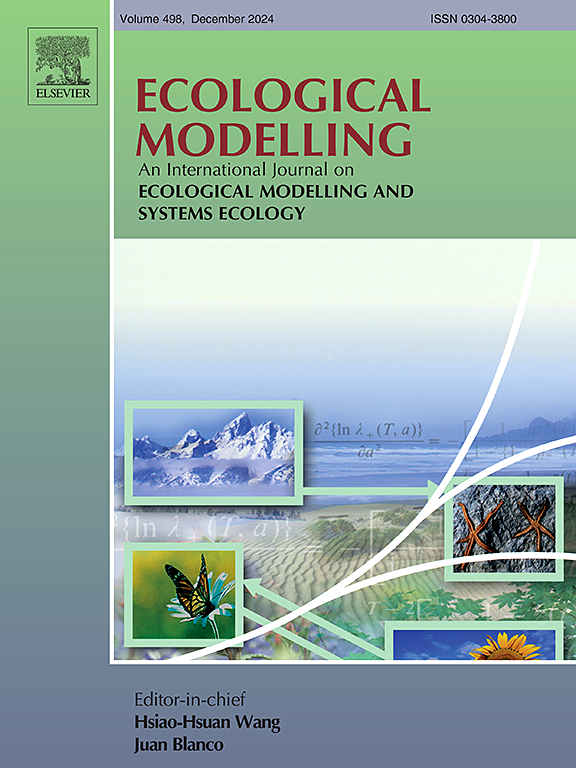A mechanistic population-level (i.e. differential equation) model of Microcystis growth and toxin production
IF 2.6
3区 环境科学与生态学
Q2 ECOLOGY
引用次数: 0
Abstract
Blooms of the cyanobacteria Microcystis and its toxin microcystin (MC) are an important global environmental problem. Effective management of waterbodies impaired by these cyanobacteria harmful algal blooms (CyanoHABs) requires modeling, but existing operational codes generally do not include toxins. Recently, we presented a model of Microcystis growth and toxin production, which builds on a large literature meta-analysis and can reproduce the observed succession of toxigenic and non-toxigenic genotypes and MC concentration in Lake Erie (DOI: 10.1126/science.abm6791) and other systems (DOI: 10.1016/j.hal.2024.102711). However, that model's complexity and agent-based modeling (ABM) structure make it difficult to use. Here, we present a simpler and more general population-level model (PLM) that can be integrated into existing operational Eulerian modeling frameworks. The model includes toxigenic and non-toxigenic strains and state variables for intracellular and extracellular MCs. Processes include MC synthesis as a function of temperature, light and nitrogen availability, benefit of MC (e.g. protection against H2O2 damage), excretion and degradation (extracellular). Two versions for variable (i.e. Droop) and fixed (i.e. Monod) phytoplankton nutrient composition are presented. The PLM can also reproduce the field observations, and simulations of management options are consistent with the ABM, including an increase in MC concentration under a 40 % phosphorus only reduction strategy for systems with partial N-limitation. The model constitutes a substantial step towards closing the gap between biological understanding and operational management models.

求助全文
约1分钟内获得全文
求助全文
来源期刊

Ecological Modelling
环境科学-生态学
CiteScore
5.60
自引率
6.50%
发文量
259
审稿时长
69 days
期刊介绍:
The journal is concerned with the use of mathematical models and systems analysis for the description of ecological processes and for the sustainable management of resources. Human activity and well-being are dependent on and integrated with the functioning of ecosystems and the services they provide. We aim to understand these basic ecosystem functions using mathematical and conceptual modelling, systems analysis, thermodynamics, computer simulations, and ecological theory. This leads to a preference for process-based models embedded in theory with explicit causative agents as opposed to strictly statistical or correlative descriptions. These modelling methods can be applied to a wide spectrum of issues ranging from basic ecology to human ecology to socio-ecological systems. The journal welcomes research articles, short communications, review articles, letters to the editor, book reviews, and other communications. The journal also supports the activities of the [International Society of Ecological Modelling (ISEM)](http://www.isemna.org/).
 求助内容:
求助内容: 应助结果提醒方式:
应助结果提醒方式:


